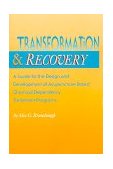Resources for Acupuncture in Chemical Dependency Treatment and Recovery

Full body acupuncture can sometimes be momentarily uncomfortable when the acupuncturist "finds the chi" at the point of insertion. Acupuncture in the drug treatment setting however does not involve these "full body" points.
In the ear acupuncture protocols
recommended by the National
Acupuncture Detoxification Association (NADA), very thin needles are
inserted at a very shallow depth in the ear cartilage. Sometimes there
is a pinching sensation on insertion, and sometimes there is no sensation
at all. There is often "pathology" in the ears of drug addicts
- a redness, for example, at the lung point. This actually acts as a guide
to the clinician as to where to best insert the needle for maximum therapeutic
benefit, and if the person has a very low pain threshold - as is often
the case with detoxing heroin addicts, for example - the needle insertion
may hurt a little initially. During their NADA training training, your
clinician will have an extended practicum on needle insertion techniques.
There are some good approaches in responding to the client's anxiety about this fear in the beginning. First is to allow them to observe other clients in the clinic being needled so they can see that it is "no big deal." Other clients are usually very helpful in alleviating the new client's fears and encouraging them to "try it."
Second, the acupuncturist has the discretion of beginning the treatments with fewer than five needles - trying just one or two to start with. Once the client experiences the positive effects and sensations of acupuncture following initial insertion of the needles, any fear and anxiety usually disappear.
previous - Read FAQs in Sequence
- next
Index of Articles - Links - Home
Scroll Down for More FAQs
How many clients can be treated at once?
How often do clients need to be treated?
How long to clients have to keep having treatments?
Does it matter what time of day the acupuncture is provided?
What
national organizations support acupuncture in treating addiction? What
resources are available to support us if we decide to do it?
Does
the acupuncture program have to include herbs or nutritional supplements?
What
is the history of how acupuncture began to be used in chemical dependency
treatment?
What
does the acupuncture clinic look like exactly?
How
much space and extra equipment will we need to do it?
How
do we clean or dispose of the needles after they are used?
How
does acupuncture fit with drug testing?
How
do we find and train people to do the needling?
Could
we just try it experimentally to make sure it's a good fit for us?
What
technical assistance will be required to start and maintain an acupuncture
component?
Is
it compatible with harm reduction?
Is
it compatible with 12-Step or abstinence-based treatment approaches?
Is
it appropriate for mandated or court-referred clients?
Is
it appropriate for adolescents?
Is
it appropriate for pregnant women?
Is
it appropriate for people with co-morbid psychiatric problems?
Is
it appropriate for people with HIV/AIDS?
Is
it appropriate in methadone programs?
Is
it appropriate in residential programs?
What
training is required for current program and administrative staff?
What are the steps we should take to add an acupuncture component?
